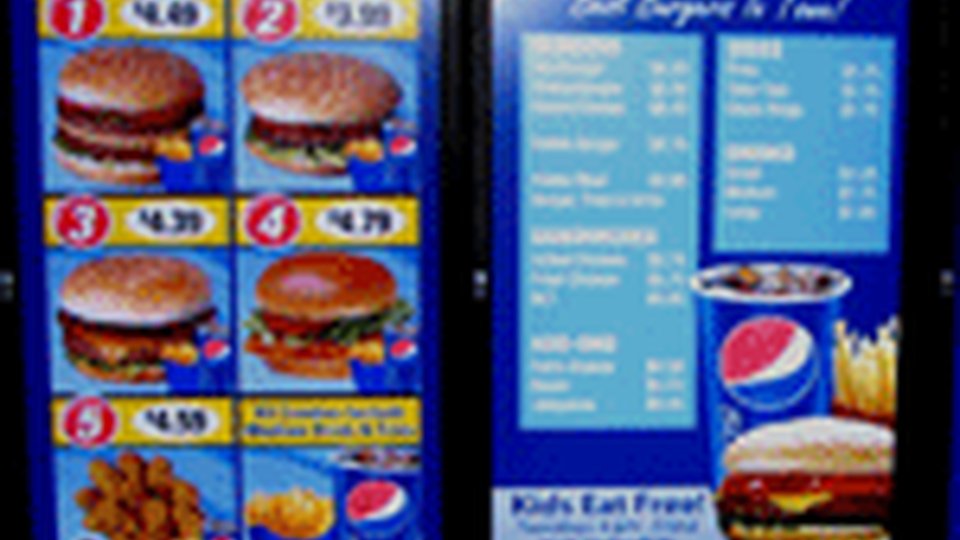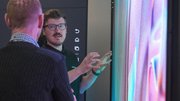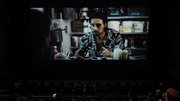Article
Digital menu boards at the drive-thru – fad or game-changer?
Insiders and technology providers are divided on how quickly, if ever, the technology will become mainstream at quick-service restaurants.

April 28, 2010 by Alicia Kelso — Editor, QSRWeb.com
A year ago, Koller was reluctant to predict that outdoor digital boards would have a place in the drive-thru. But with lower costs, better warranty options and higher manufacturing standards that allow the technology to endure harsh weather elements, he has changed his outlook.
"As many restaurants are incorporating digital menu boards inside their stores, we should also expect them to do the same at drive-thrus within the next six to 12 months," he said.
Pros
The lower cost of entry also means operators can now see a better return on investment. Koller said a handful of QSRs – especially those with more drive-thru business – are already seeing favorable ROIs.
"Most customers will see the outdoor menu, not the indoor menu, and with costs coming down on this technology, it'll be a big payback. Most folks I've been working with are getting back their investment within 20 to 30 months," Koller said.
WAND Corp. says it has customers obtaining ROIs within nine to 18 months and, in some instances, five to seven months.
Additional benefits to outdoor digital menus include appealing, bright colors and motion on high-definition screens. According to Wand Corp., they attract seven to 10 times the customer attention of static boards and can also deliver a wider gamut of information, including weather conditions and local events.
"(Digital) boards are seen as a form of entertainment, adding to customers' overall experience and satisfaction," Driessen said.
Even before the new law passed, WAND Corp. saw heightened interest in the technology. Its digital menu board business increased by almost 40 percent in the past six months and the company predicts more than 150,000 restaurants will adopt the technology within two years, Driessen said. Most of those installations — 82 percent — have been for indoor digital menu boards, but the company is encouraged by the growing number of outdoor digital orders.
Although digital menu board technology is still too young to generate many concrete statistics, QSRs are well aware of its benefits moving forward. Burger King, for example, is recommending — but not mandating — that all new 20/20 stores incorporate the technology. (See more about the 20/20 design on QSRweb.com.)   "The aesthetics, the flexibility, and the modern look of the digital menu boards complement the 20/20 restaurant image," said Hector Munoz, senior director of retail image at Burger King Corp. That image consistency translates outdoors, as well, and Burger King is exploring a few drive-thru options. This may take a bit longer, since the technology is still fledgling and somewhat cost prohibitive, but it is certainly on the map. "The digital/LCD screens showcase the appeal of our menu items via animation, which is inherently more attention-getting. More importantly, they allow us the flexibility to target the messages by day-part," Munoz said. "While cost is certainly a challenge, we are working with our teams to ensure our operators realize the best return possible." |
Not everyone, however, is convinced this technology will become a necessity at drive-thrus. Ken Neeld, president and CEO of Delphi Display Systems Inc., believes order confirmation boards – now mainstream and in use by a majority of QSR brands – are plenty sufficient. Their primary role is to improve accuracy and speed of service by ensuring customers' orders are entered correctly.
Neeld admits digital technology will become adopted at a higher rate as costs continue to fall, but thinks the process will entail a combination of systems, rather than a complete digital transformation.
"We believe order confirmation capability will be integrated into digital menu boards. By leveraging one hardware platform for both functions, the requisite ROI will be more achievable across a range of QSR brands and business models," Neeld said.
There are a several factors that will likely prevent widespread adoption of outdoor digital technology. First there is the QSR industry's traditional slowness in adopting new technology and the fact that many QSR brands have simple menus for which the less-expensive static boards work adequately. Additionally, order confirmation boards are already in use by a majority of brands, and there are still some questions about digital's reliability, Neeld said.
"It must be designed with redundancy, so if a digital screen goes down the restaurant can continue to operate until it is repaired," Neeld said. "It's important to understand the underlying technology limitations, and also capabilities of the supplier."
A combined product is the more likely immediate future Neeld sees:







